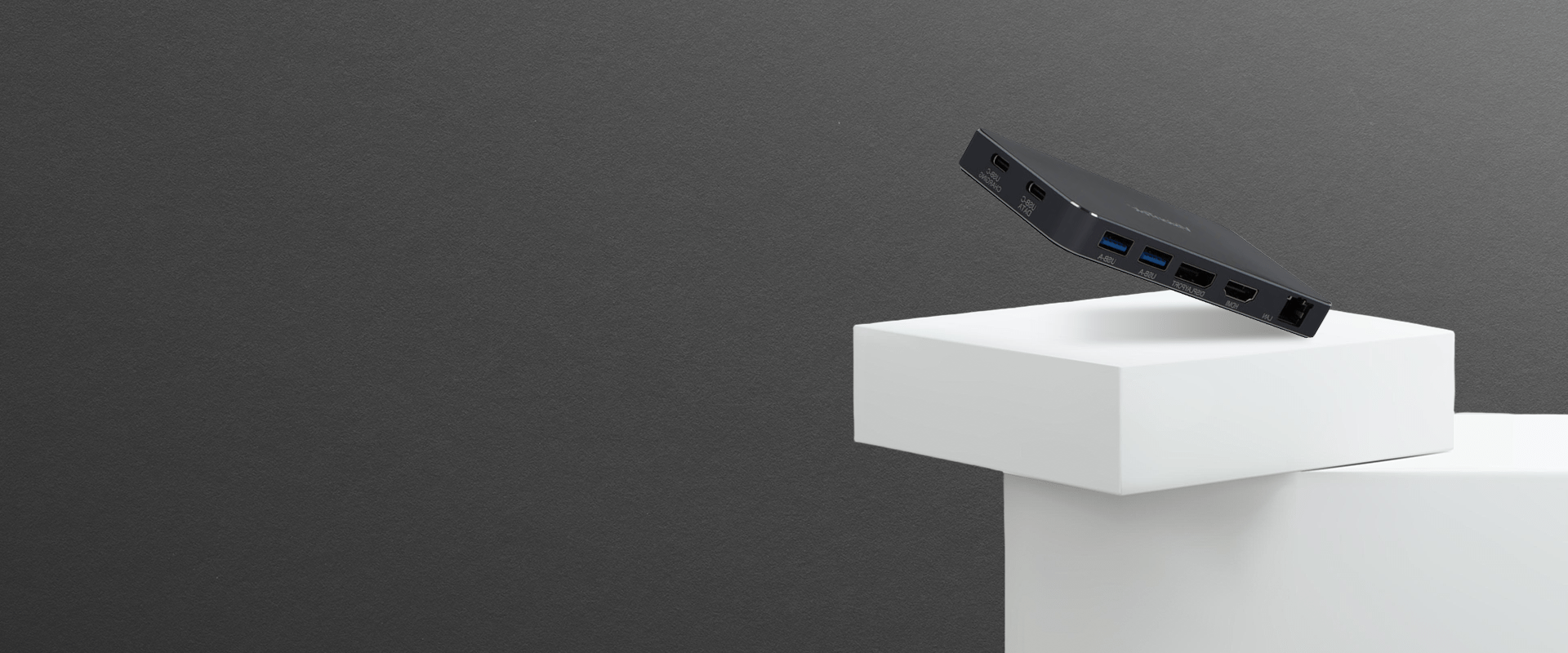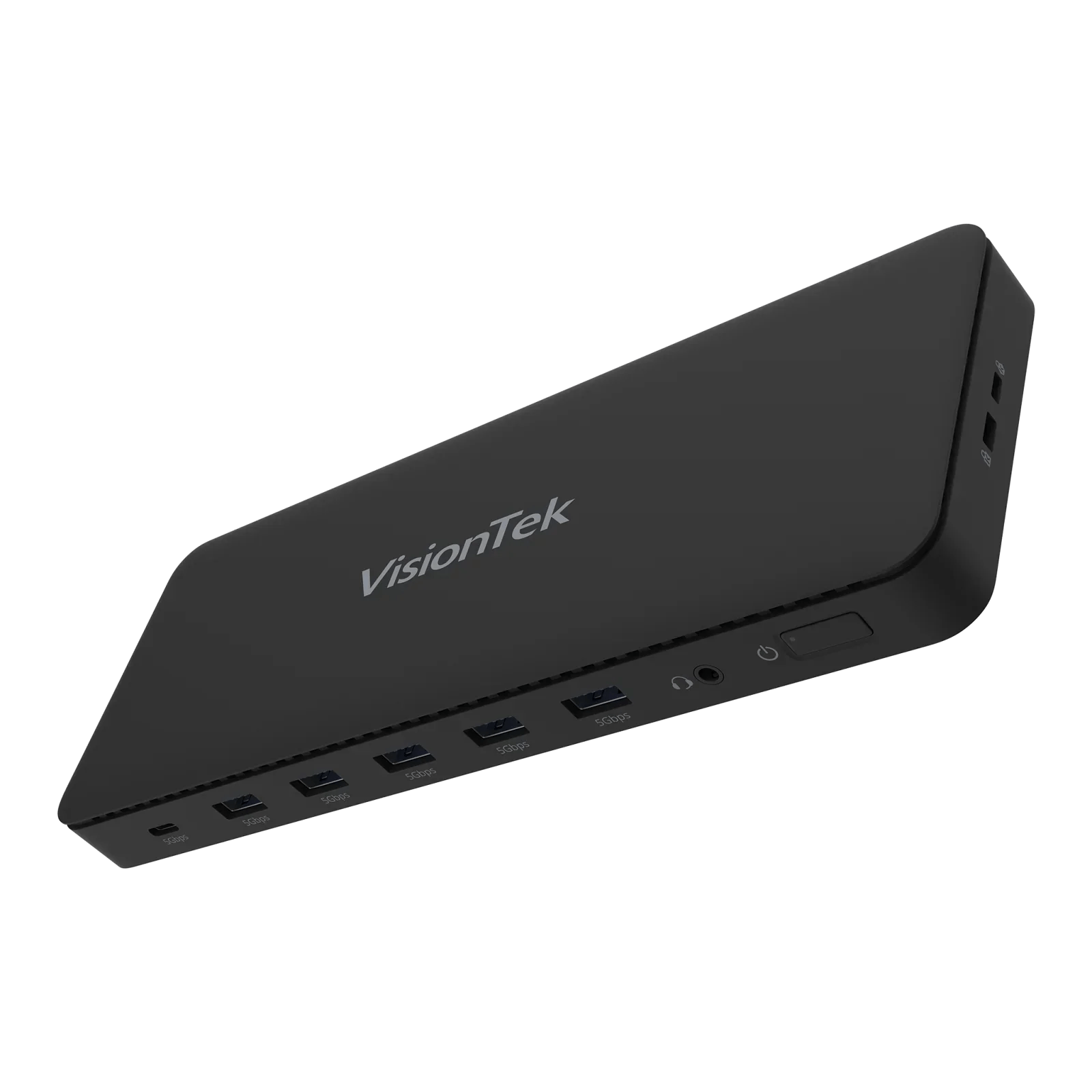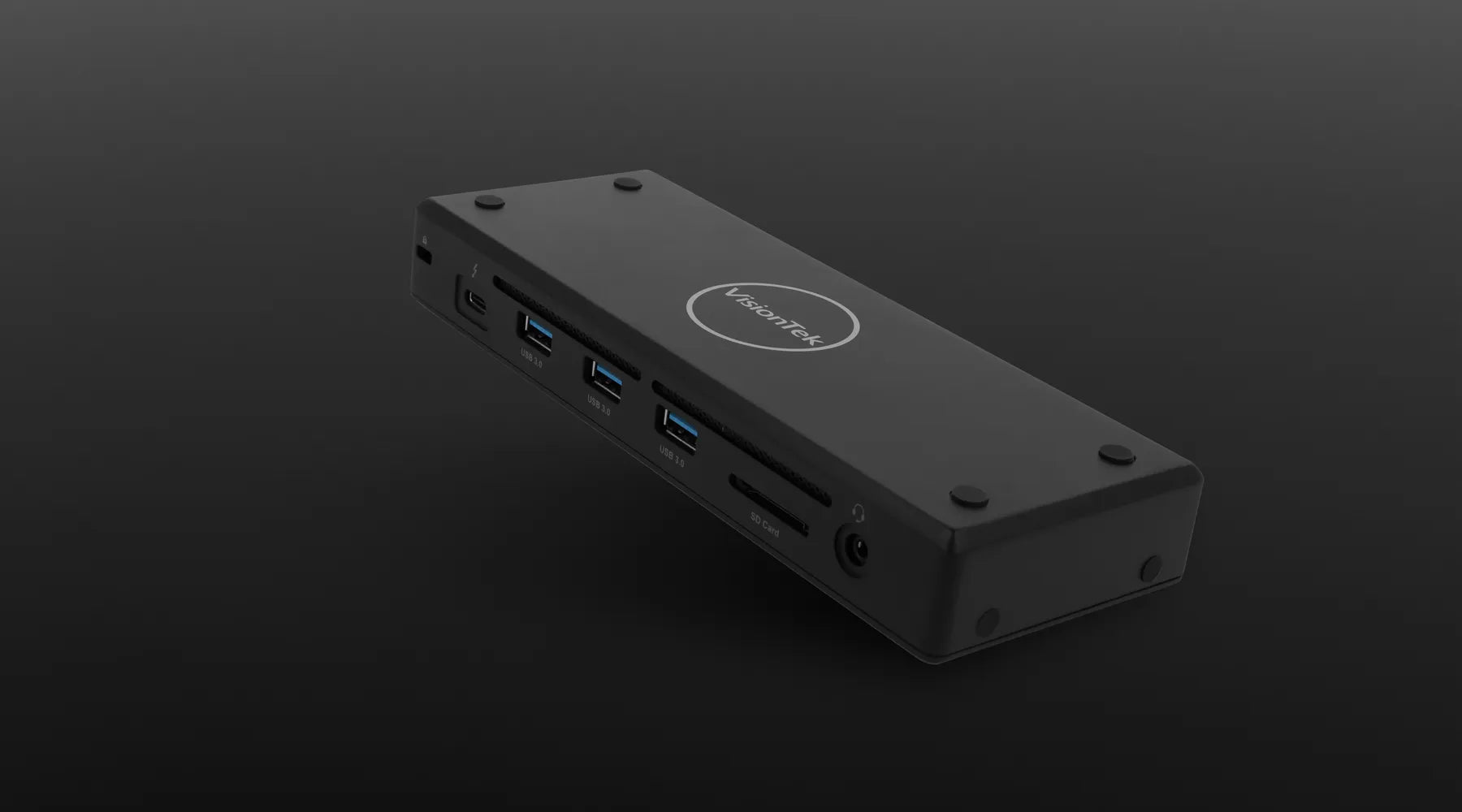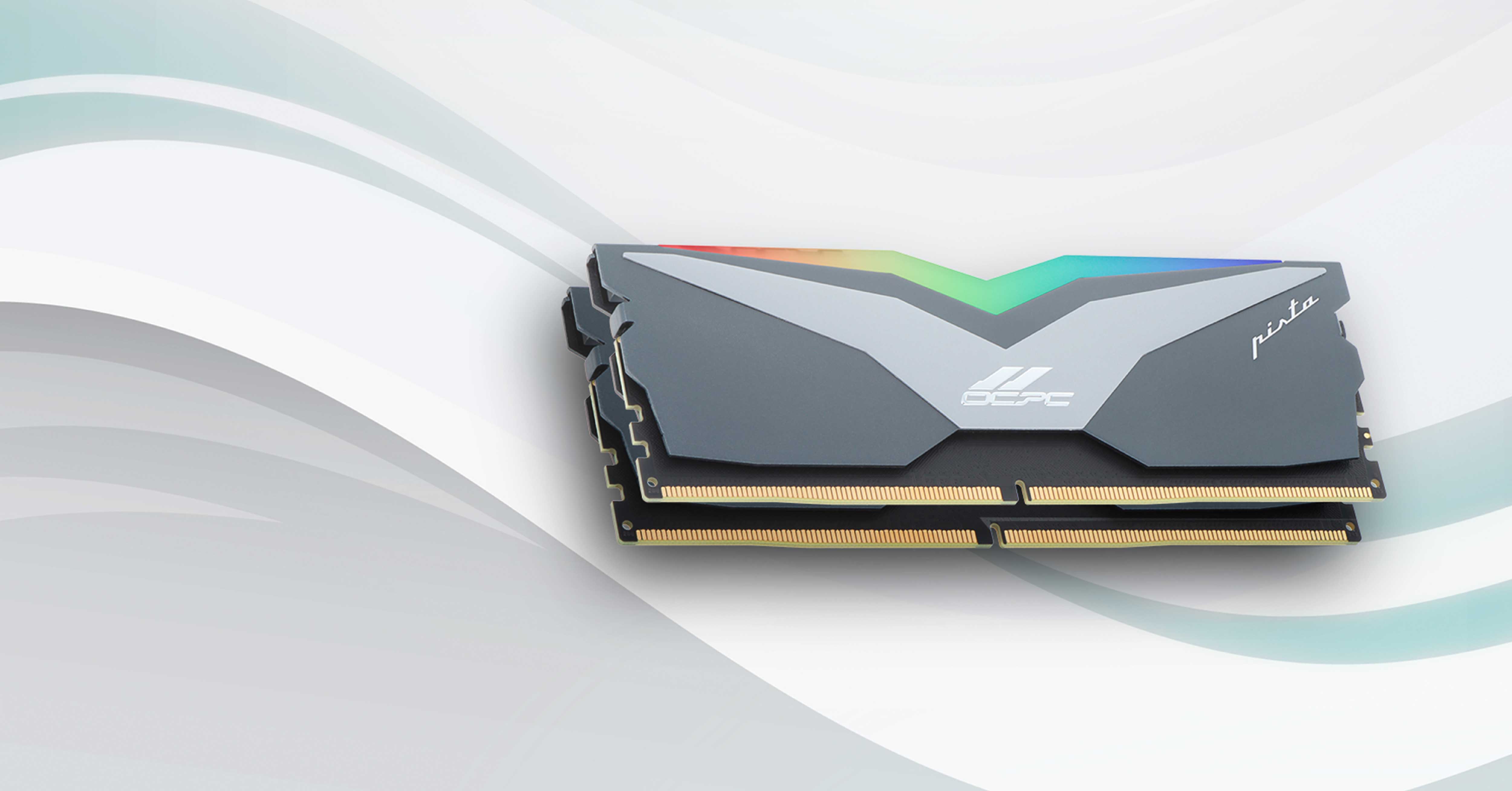With a whole host of docking station and laptop hub options at your fingertips, it’s easy to get overwhelmed by the sheer number of options to choose from. That’s why we wanted to create a quick and easy guide to highlight the key indicators that will help you decide which docking station solution is right for you. By answering these core questions, we can find the best fit for your specific host machine, peripheral devices, and workplace scenarios.
Whether you’re looking for a portable laptop port extension, or a home office hub to extend your remote work productivity, this guide will help you answer the tough questions and narrow down your options based on your specific needs. Let’s jump right into the most important questions.
Why use a docking station?
If you’ve found yourself here, it’s likely you understand the benefits that having more than a single bonus monitor or simple card reader can provide. Docking Stations allow for additional peripheral connections a laptop may not already have. These connections include additional USB ports, Power Delivery or Power Passthrough, AV (Audio/Visual) support, SD card, Ethernet, etc.
Regardless of your reason for seeking a new dock, here are a few things to consider right off the bat.
PC or Mac?
The first question to nail down is whether your host machine is a desktop or laptop, and whether it’s a PC or Mac. Though many of the commonly used peripheral devices will work with docks designed for either platform, starting with the goal of extending your specific machine’s capabilities will help you maintain compatibility and ensure that you don’t need to buy additional cables, dongles, etc. to act as a bridge for a target function down the road.
For example: VisionTek’s VT7100 was specifically built to cater to the port-light design of the new M1 and M2 generations of MacBooks, as well as the classic metallic aesthetic of many of the prominent Apple products. In addition, it is universally compatible with PC & Mac environments.
VT7100
Universally Compatible supporting three 4K Display on PC & Mac with 100W of Power Delivery.
Portable or Stationary?
The next question to consider is where you need to take your dock. For some road warriors or regular remote travelers, a smaller docking station is a must have. For these situations, we recommend our portable line of docking stations that provide a surprising number of ports and power in a compact form factor designed for easy storage and traveling. Check out the VT200 and VT400.
For all other more standard setup situations, it’s on to the next key question.
Base Connection Type
After you nail down the function you need, next is picking out the dock with the right ports and specifications. This starts with your base connection to your machine. For most modern computers, this comes down to two primary connection types with a few different variations.
USB-A (DisplayLink)
For USB-A Models, DisplayLink USB-A connecting docking stations are ideal. Some of these models include the VT100, VT1000 and VT4000.
USB-C (DisplayLink)
For mixed environments, we recommend the Universal USB-C DisplayLink docks such as VT4000, VT4500, and the VT4510.
USB-C (DP Alt Mode)
A laptop with DP Alt Mode capabilities opens a world of possibilities as any of our docks is compatible. Performance may vary depending on your USB-C version or generation, but any number of docks from the VT200, VT400 to the VT2500 might be the right fit depending on your intended use case.
What Ports Are a Must for You?
With some docks offering a multitude of ports (check out the VT2500) and connections for your every digital need, the best thing to consider next is which connections are key for your setup. Do you need extra displays? An ethernet connection? A USB-C port to charge your phone or USB-A ports for your keyboard and mouse? There is a dock that works for you regardless.
Displays
Next up is determining the display connection type you need. Are you looking for HDMI? VGA? DisplayPort, mDP? What about the number of external monitors you’d like to connect? Whether you’re looking for a cloned display for your laptop screen or an extension of your screen space, the right docking station will have the connection type and resolution you need to bring maximum clarity to your laptop environment on-the-go or at home.
Check out some of our most popular triple display docks:
Extra Peripherals
Before you jump into one that meets your base requirements, let’s make sure everything you need is accounted for. What other devices do you need to connect? Whether you’re transferring files, charging your phone, attaching a stream deck, uploading footage via SD card, or hardwiring into your internet, we have a dock with the ports for you.
Cable and Adapters
Now that you have a better idea of some of the docks that might be a good fit for you, taking an inventory of your cables and connections is always a good idea. If you have need to transmit a video/audio signal to a different connection type, or simple connect a USB-C device to a new docking station, we have the unique cable that is right for you.
A Quick Note on Passive vs. Active Cables & Adapters
Passive types are cables and/or adapters in which a signal type translation occur however, they require the host device to power/assist in translating signal type (For example: HDMI to DisplayPort).
Active types are cables and/or adapters in which a signal type translation occur however, they contain additional components to aid in translating signal type rather than relying on host devices to do so.
Filter for Docking Stations
If you’d like to see all of the steps above in aggregate, or through a familiar shopping environment, we also have a robust filtering system that can be found in our full docking station products page on the site. Simply check the boxes that apply to your needs and check that the resulting dock has the right connection type for your host machine!





Share:
DisplayPort – A Comprehensive Look into the Popular Video Connector
What is DisplayLink? Everything You Need to Know About DisplayLink Docking Stations